Herb Kornfeld was an American School painter whose prolific career spanned eight decades (painting until his death in 2001) and helped forge a new style referred to by art critics as “California Modernism.” A landscape painter—who considered the outdoors his studio and executed series around the country and the world— capturing the beauty of the California coast was a lifelong passion for the Los Angeles, Calif.-based artist.
With a particular affinity for water, beaches, fishermen, boats, barns and sunsets, Kornfeld painted extensively over the years, from San Francisco and Mendocino in the north to Los Angeles and San Diego in the south … and on Catalina Island. He also captured a myriad of other iconic California images, including the Watts Towers; the Santa Monica Pier carousel; Downtown L.A.’s Angel’s Flight Railway; Rodeo Drive; the Morro Bay dock (which no longer exists); as well as oil derricks and other industrial scenes.
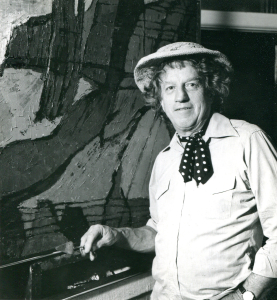 Kornfeld left behind an expansive library of oil paintings—including when he tired of the limits of a flat canvas, three-dimensional, multi-surface works he called triptychs—as well as hundreds of acrylics, sketches, cartoons, and watercolors. His works have been displayed in museums and galleries across the United States and in Europe … and his graphics have been published by the New York Graphic Society and Aaron Brothers. Philanthropically minded, Kornfeld’s work has been reproduced for fundraising efforts by both UNICEF and the Concern Foundation (which raises money to fund pediatric cancer research), in addition to the charitable auction of original pieces.
Kornfeld left behind an expansive library of oil paintings—including when he tired of the limits of a flat canvas, three-dimensional, multi-surface works he called triptychs—as well as hundreds of acrylics, sketches, cartoons, and watercolors. His works have been displayed in museums and galleries across the United States and in Europe … and his graphics have been published by the New York Graphic Society and Aaron Brothers. Philanthropically minded, Kornfeld’s work has been reproduced for fundraising efforts by both UNICEF and the Concern Foundation (which raises money to fund pediatric cancer research), in addition to the charitable auction of original pieces.
Born and raised in Great Falls, Mont., in 1915 (he would have turned 100 this year), Kornfeld began painting at a very early age and, at 11, was chosen as an apprentice to Charlie Russell (1864-1926), a well-known artist of the American west … Who, unfortunately, died before lessons could begin.
Following a stint in the Navy in WWII—where he painted mines with camouflage, amused fellow recruits with Armed Forces themed cartoons and was a “right-hand man” to Admiral Chester Nimitz, according to his widow—a 21-year-old Kornfeld moved to Los Angeles where he studied at Pasadena’s Art Center and, later, went on to train at the prestigious Chouinard School of Art with Palmer Schoppe, who became a lifelong friend.
When Kornfeld was introduced to Walt Disney, the cultural icon took the talented young man under his wing, helping him to hone his skills as an illustrator and animator in the late ’30s working on Donald Duck (who debuted in 1934) and such classics as Fantasia (1940).
Although he worked as an artist at most of the major studios, including MGM, Warner Bros. and Columbia (also appearing in numerous films as an extra), Kornfeld soon realized there was more to life than “The Duck” and took to the road to pursue his career as a fine artist and to lead a decidedly bohemian lifestyle. He began journeying up and down the California coast, throughout the U.S. and, around the world to paint in such locales as Canada, China, England, France, Greece, Sweden, and Mexico.
His paintings were “happenings,” says Sam Kornfeld. With 27 pieces of luggage in tow, she recalls, they would settle into a community, living there for months to extract its spirit and flavor, producing 25- 30 paintings in each environment. Such sojourns were frequently themed, such as his English series, which followed the Thames River from its mouth to its source.
When Kornfeld declared the series complete, the couple would vacation for several weeks (while the oils dried fully), then he would remove the canvases from their stretchers, roll them tightly, place them in a repurposed oxygen tank for safe keeping and roll them onto the plane home, never allowing them out of his sight.
Establishing his own, uniquely modernist aesthetic, Kornfeld became well known for his loose, flat brushstrokes— transforming simple boats and other landmarks into geometric, cubist forms—and his bold and interpretative use of color. Early in his painting career, he began producing his own pigments to attain some of the unique colors and hues that became one of his calling cards. “He saw color differently,” Sam says of his hand-crafted paints.
As colorful as his paintings, the redheaded artist—who had a true joie de vivre—always painted in a hat and ascot … even while shirtless during summer months. While traveling with Circus Vargas, he performed as a clown in the show, visiting 360 cities and capturing the highs and lows of circus life on his canvases. While living on Catalina Island off the southern California coast, his wife decided to dress as a mermaid for Halloween, for which he promptly volunteered to do her make- up and fished real seaweed out of the harbor to embellish the costume. “I stunk to high heaven,” Sam Kornfeld laughs.
A true renaissance man and raconteur who loved surrounding himself with people and frequently attracted other talent—Both K.D. Lang and Melissa Etheridge were each tenants for a time in the couple’s Hollywood Hills guest house near the heart of historic Hollywood—Kornfeld was also a writer, dabbled in woodworking and lifestyle design for home décor, invented board games and was an amateur magician.
Together for many years and married for 10, recalls Sam, “We had an ongoing love affair until the day he died,” in a house on Solimar Beach located on the California coast near Santa Barbara … where he painted his final sunset.




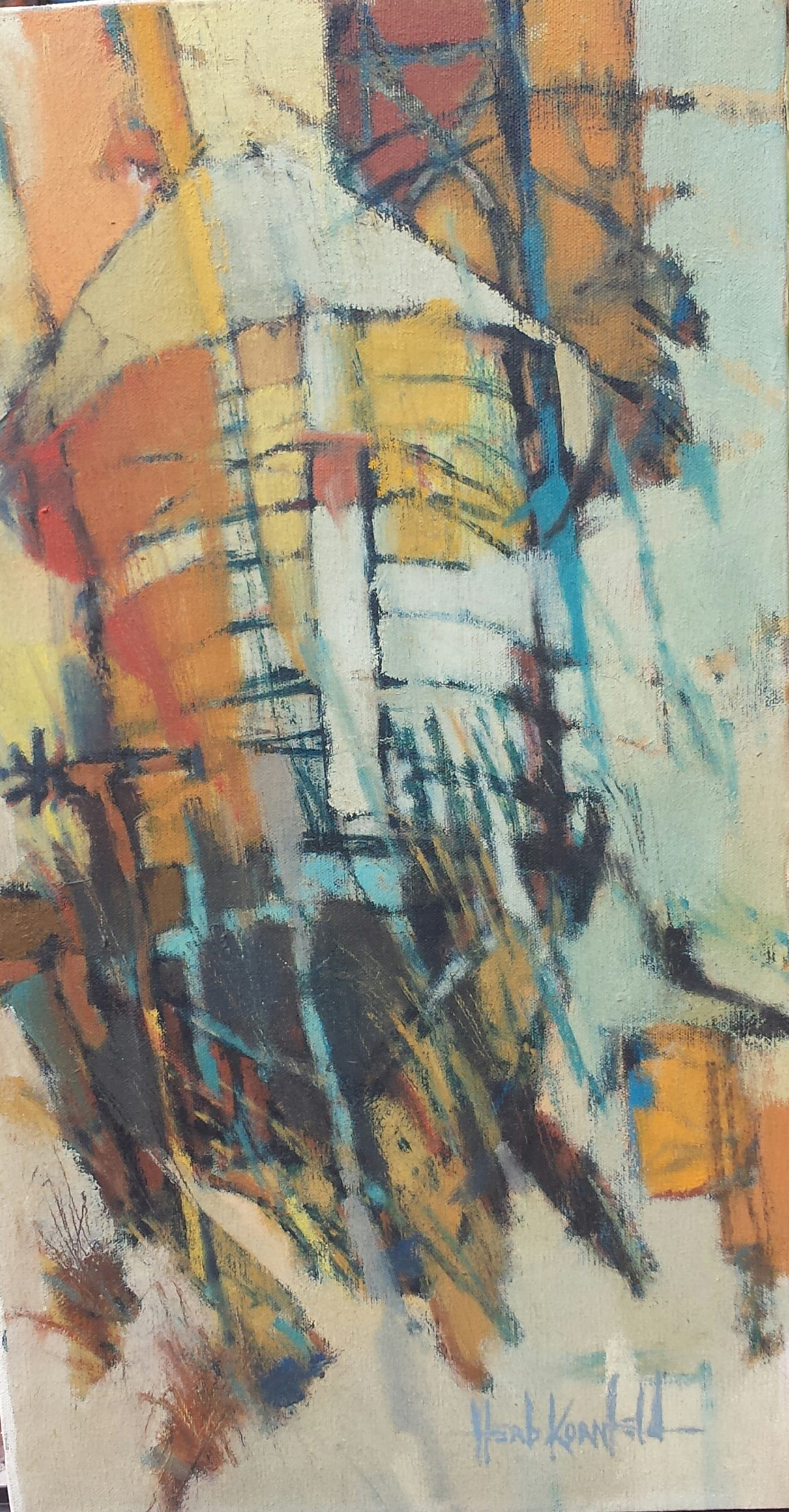
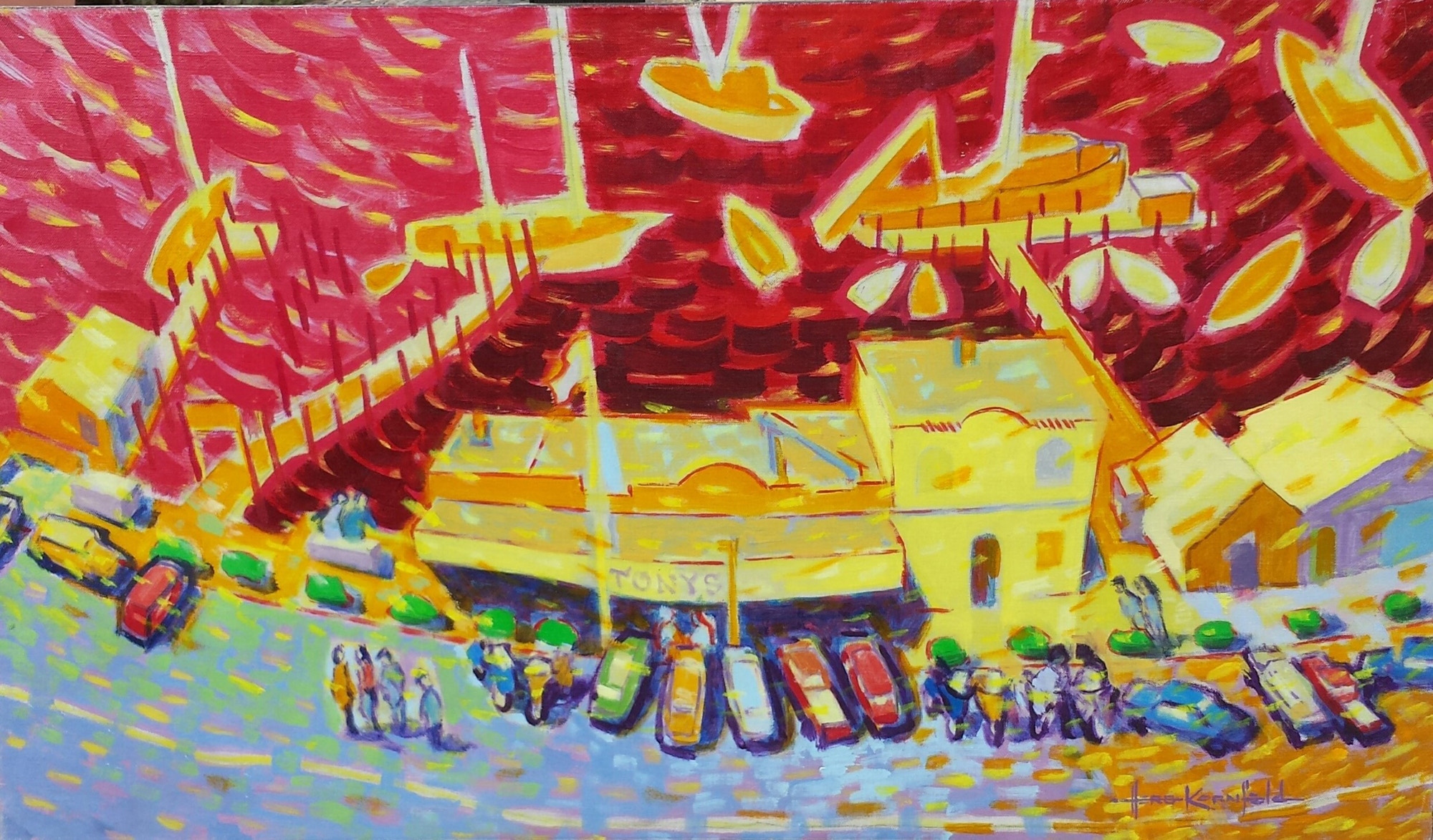
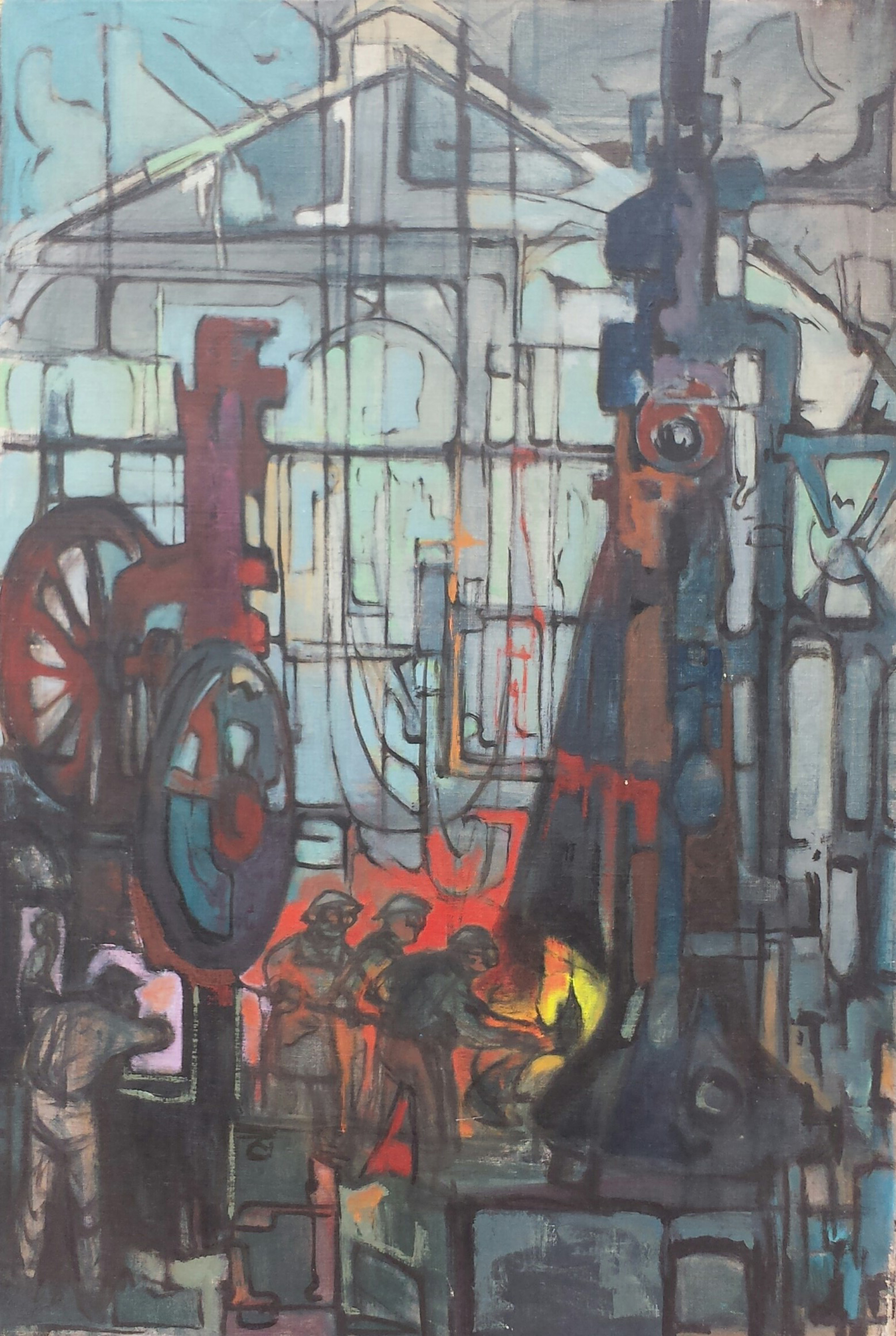
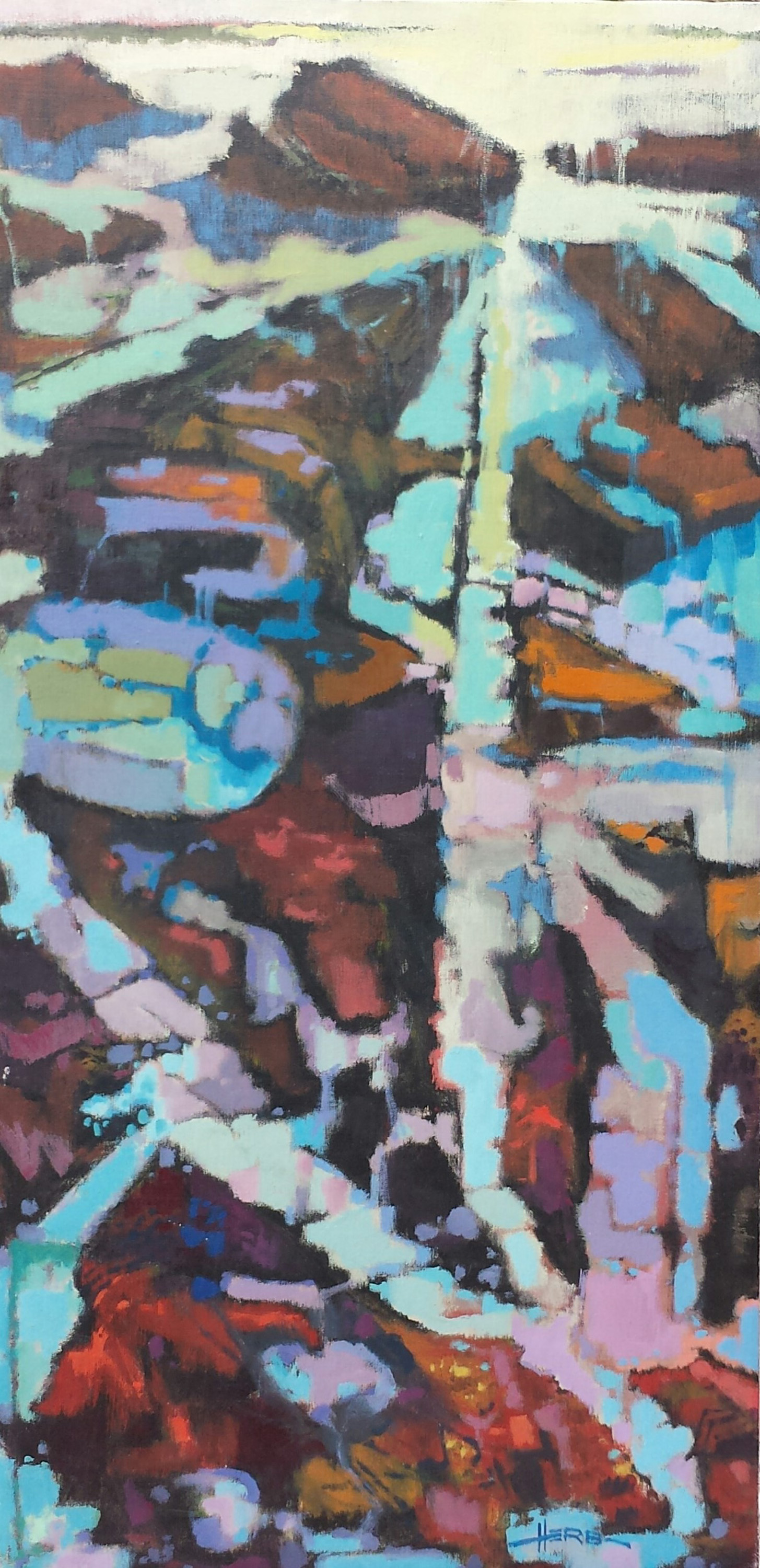
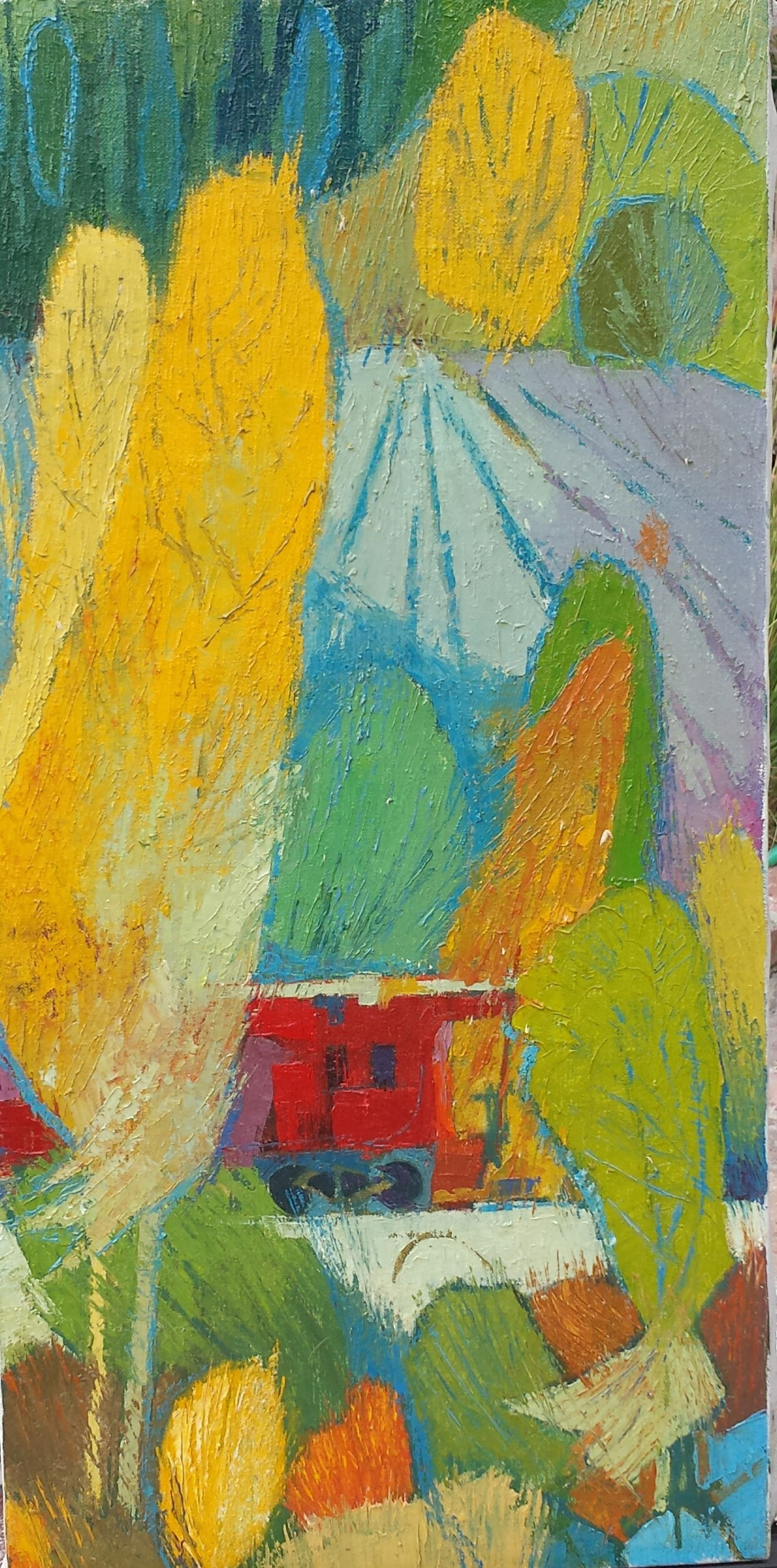
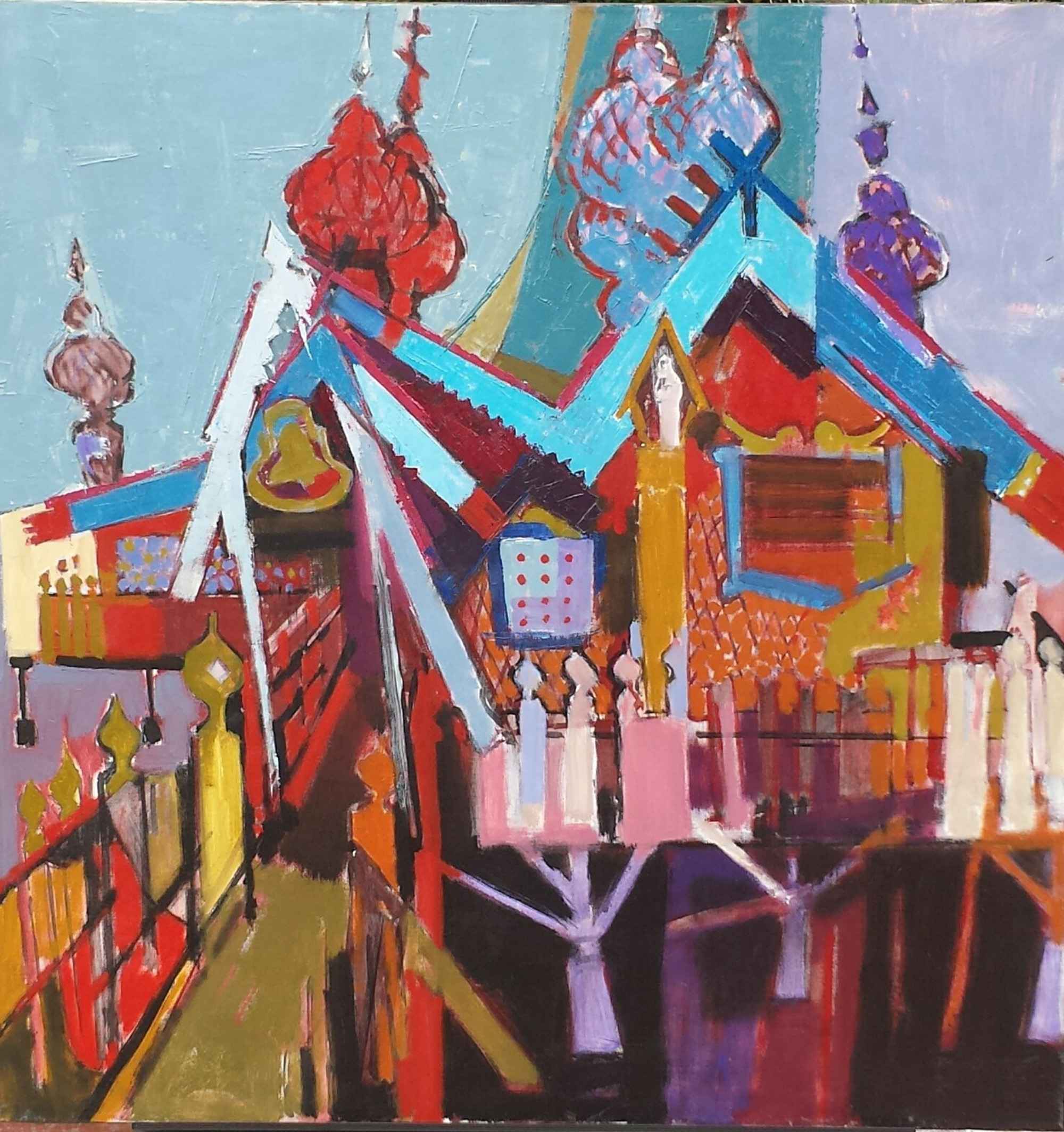

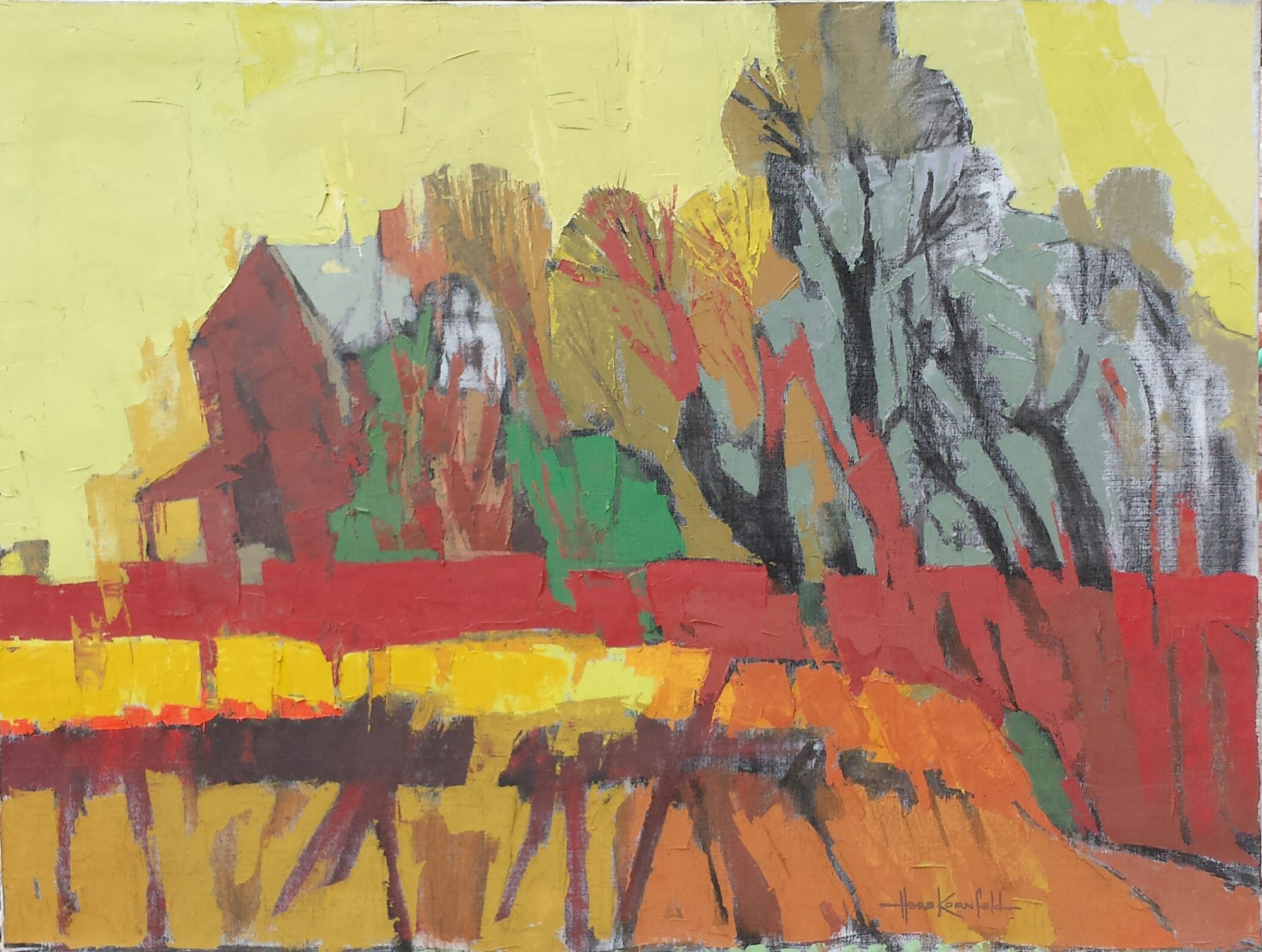
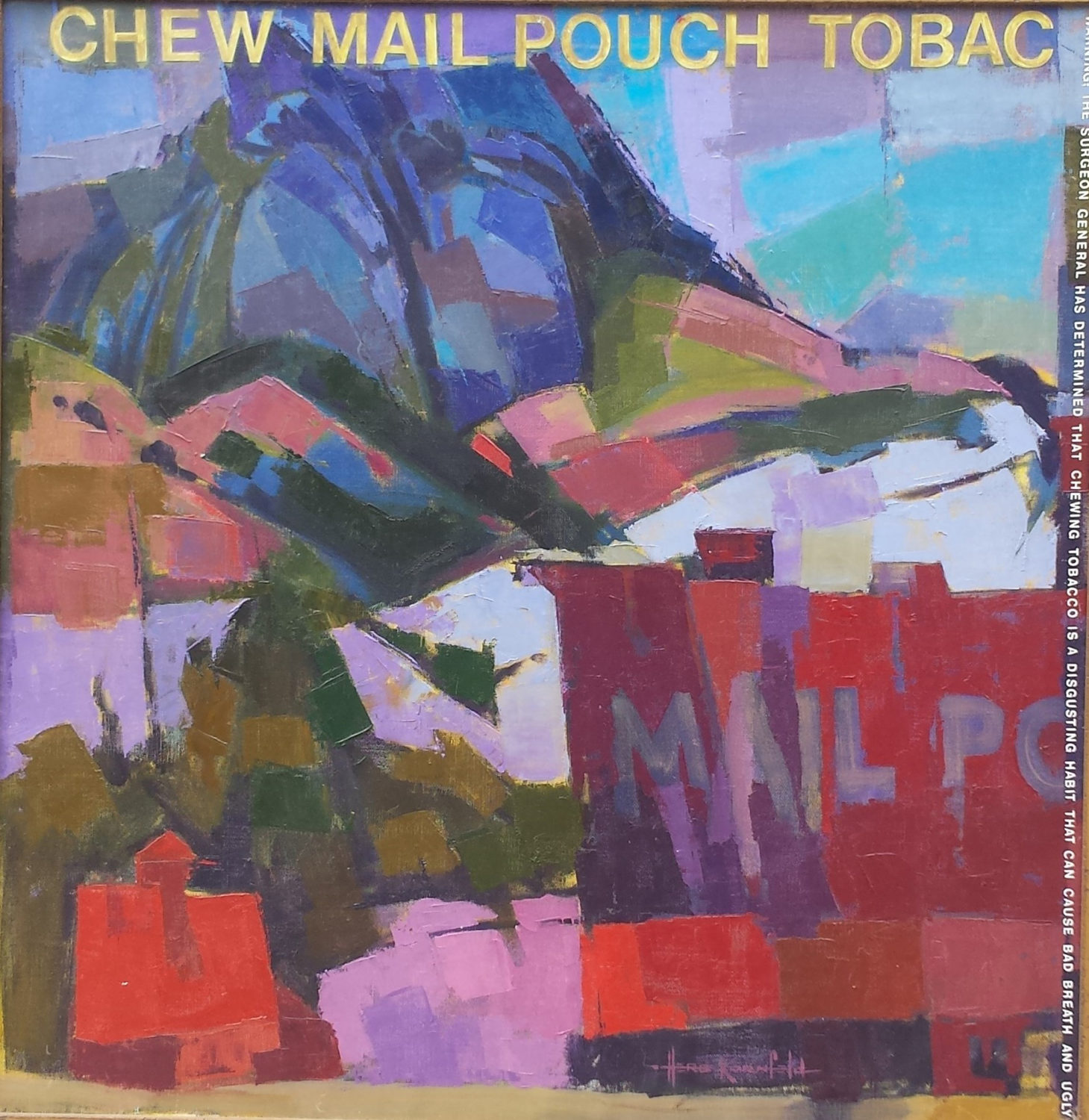


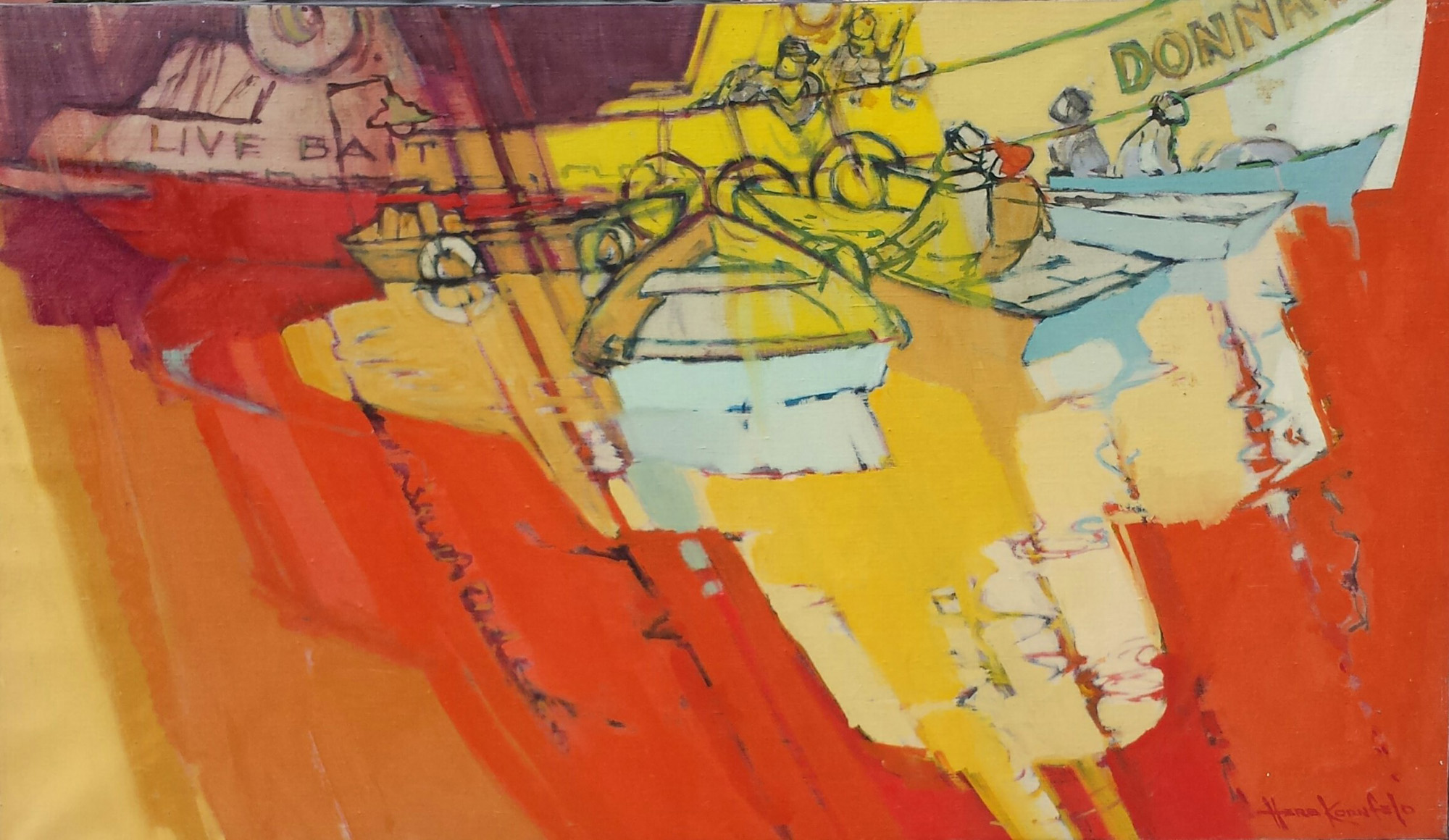
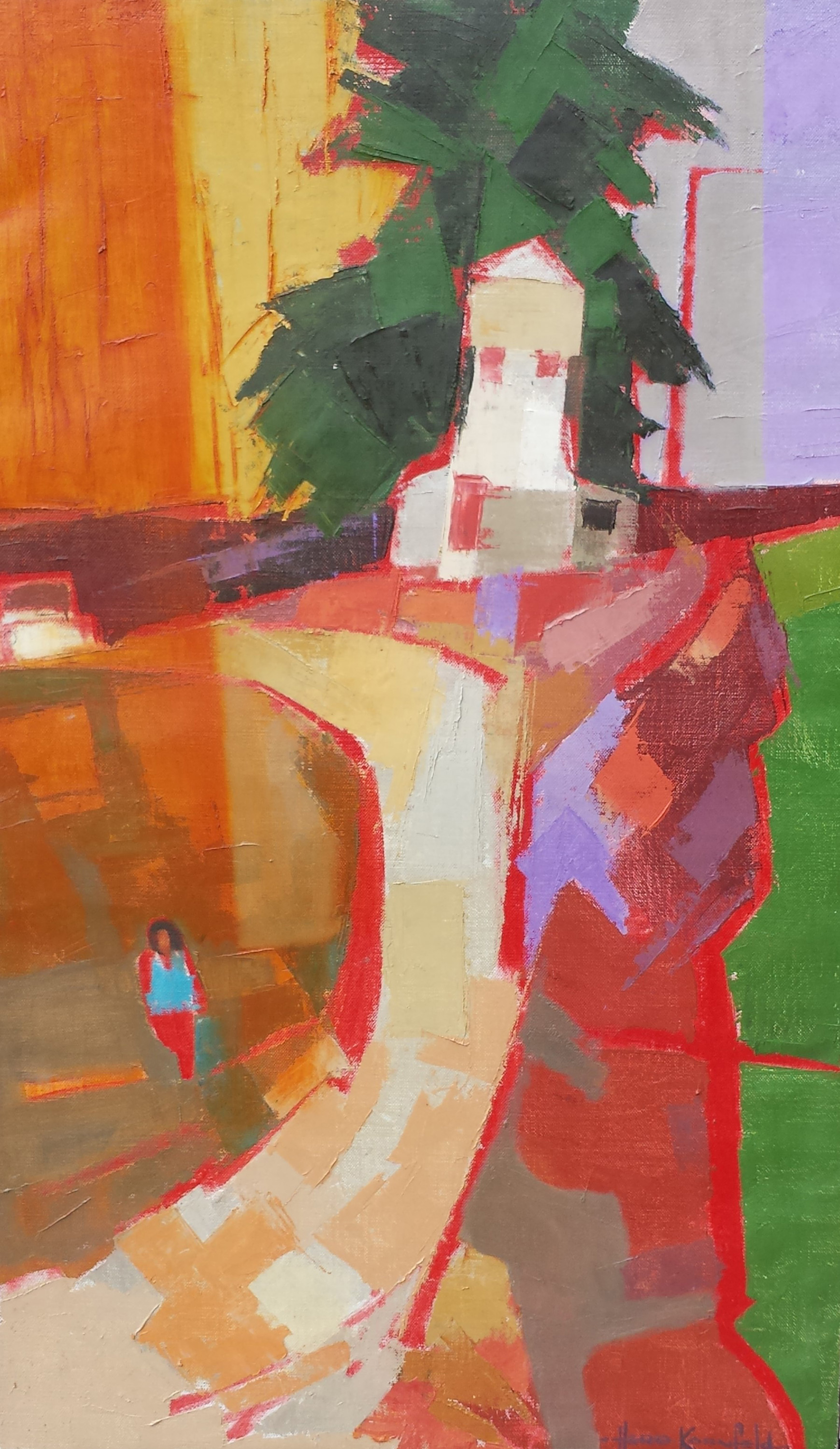


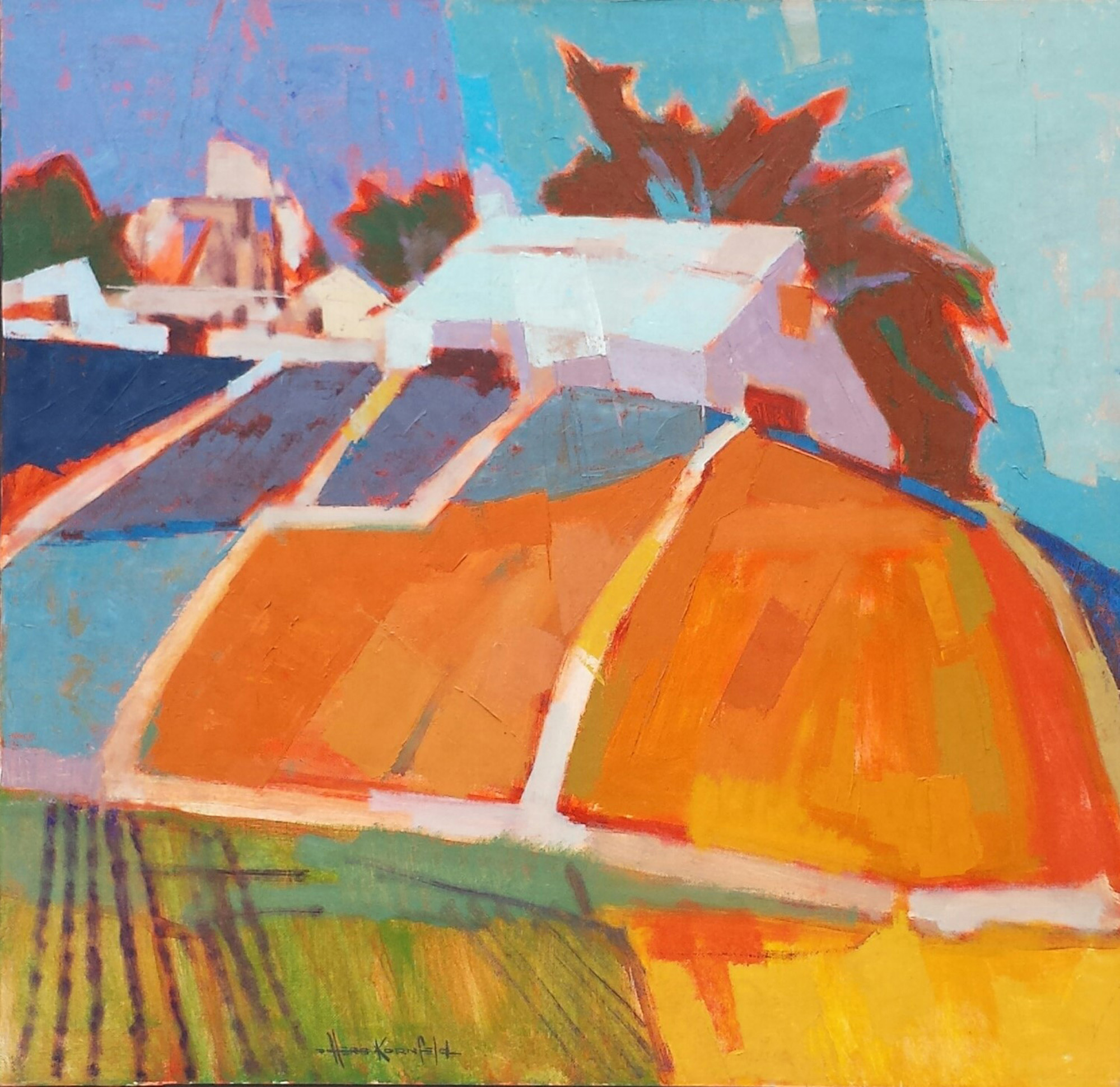

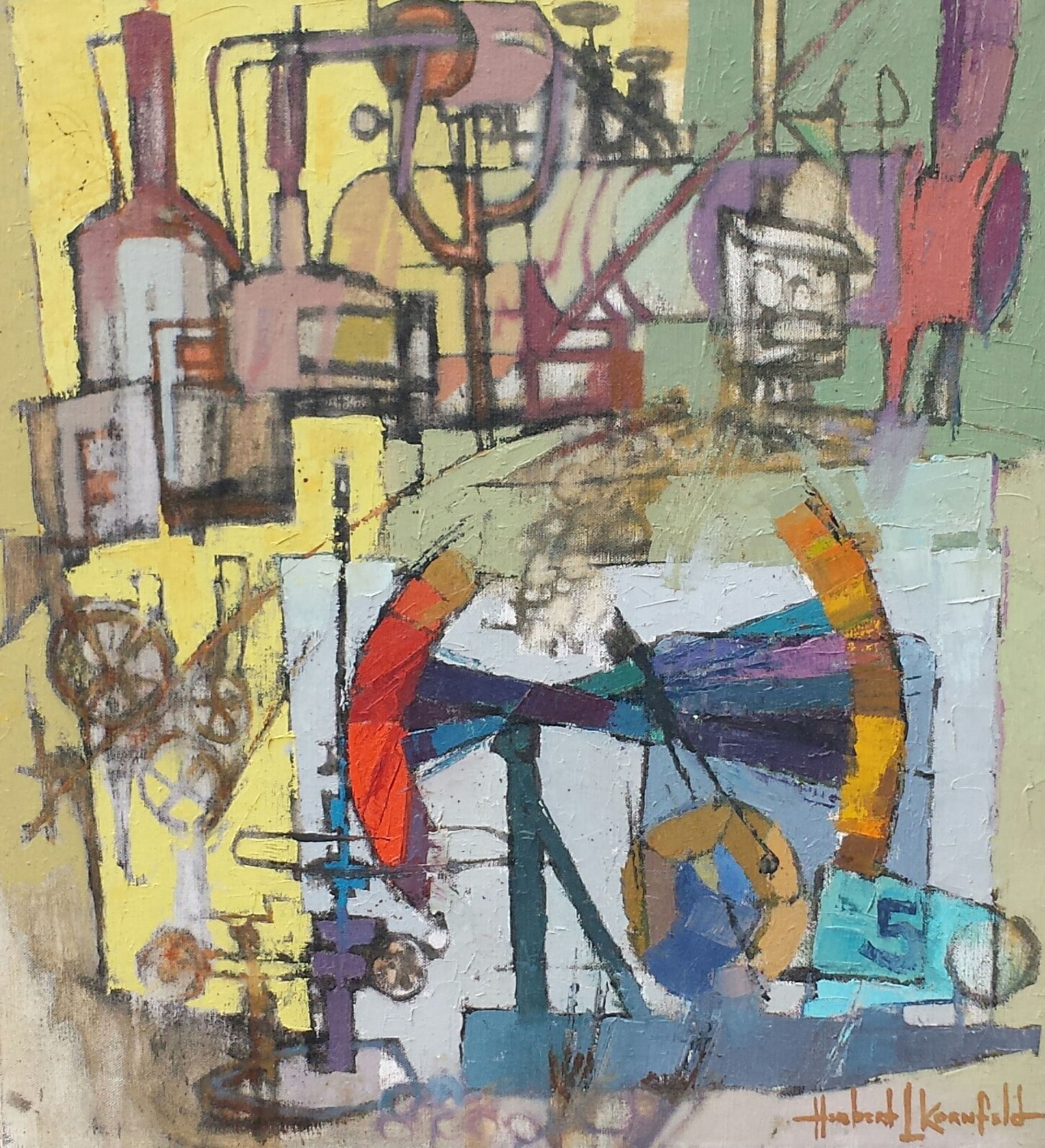


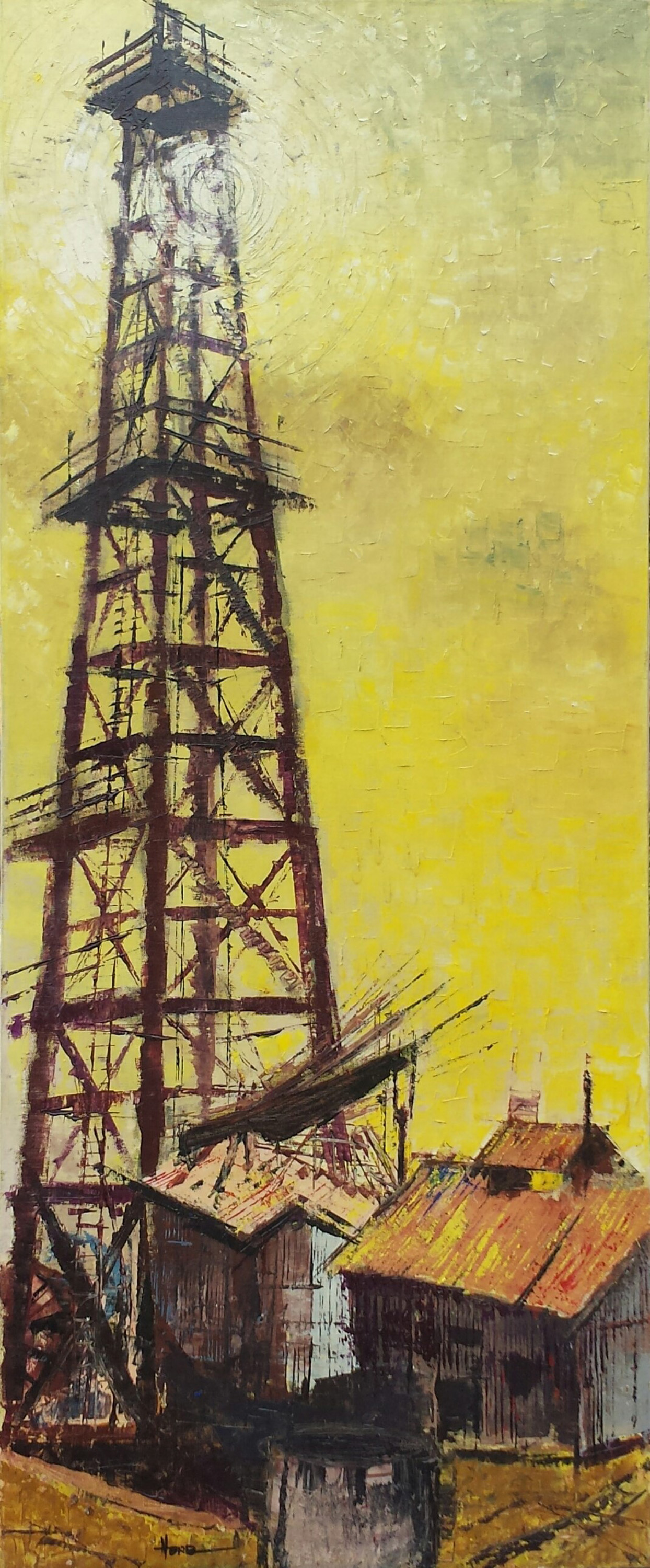
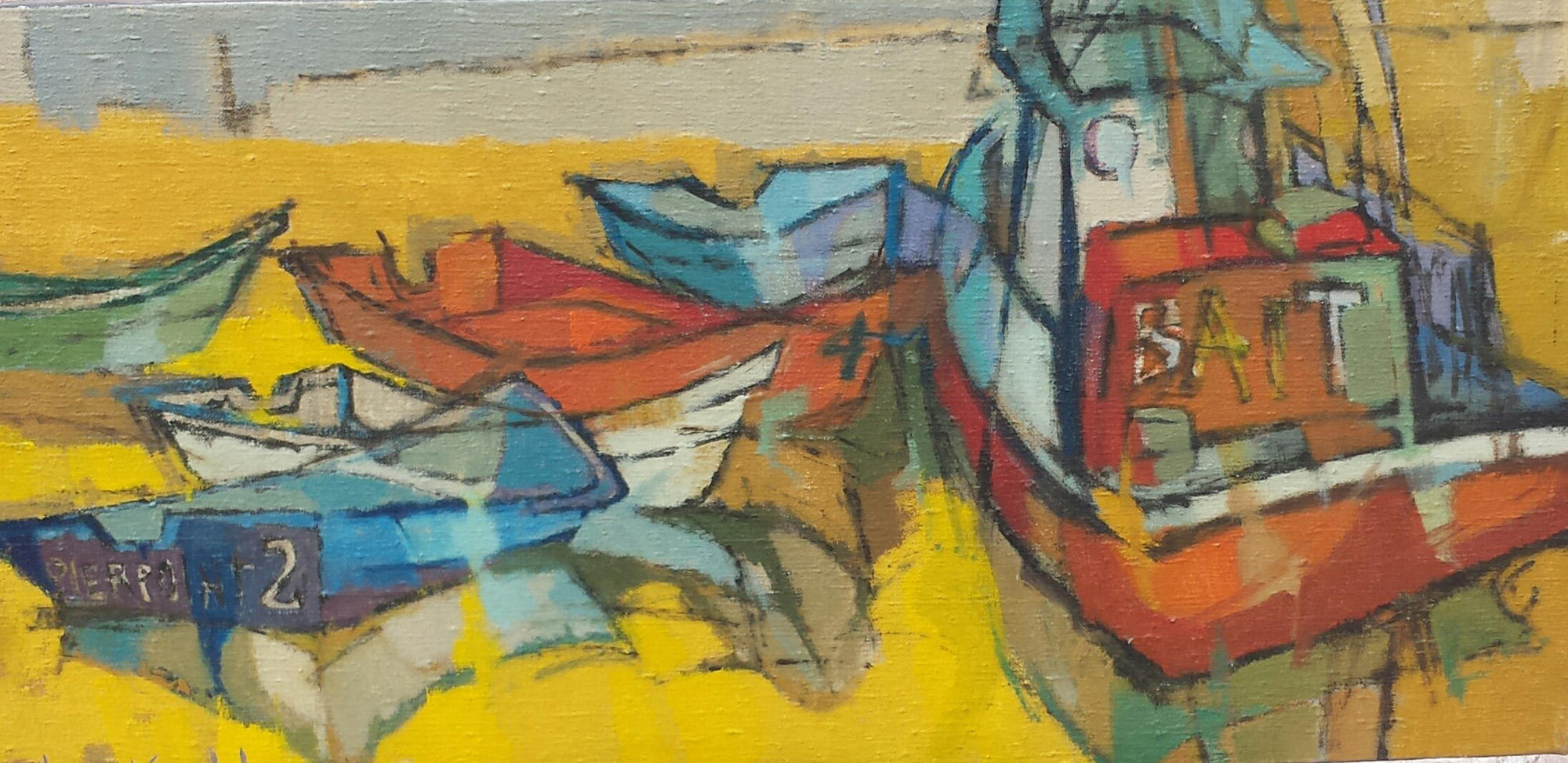
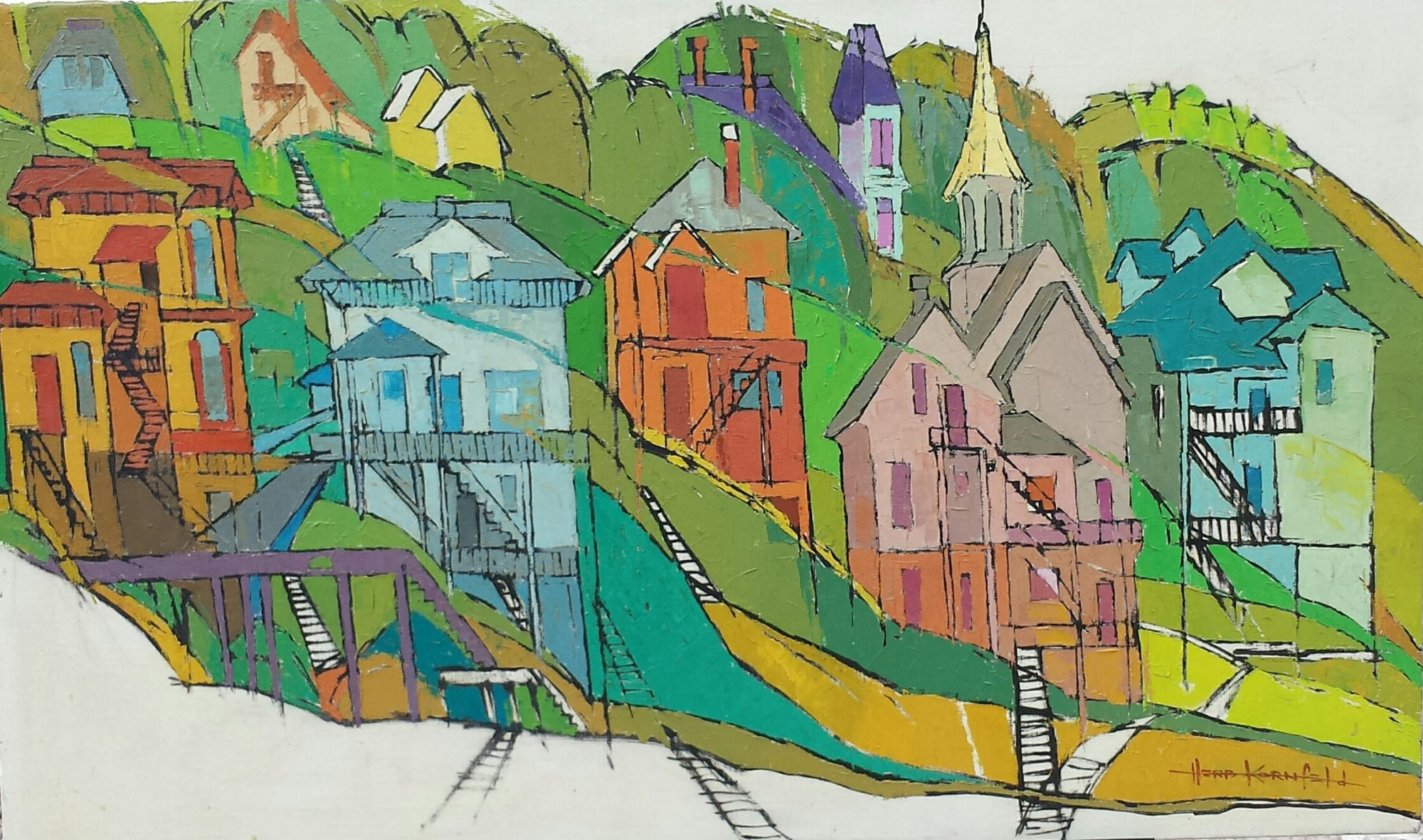
What an interesting style. So colorful!!!
Wonderful work and thanks so much for sharing such a dynamic, colorful style.